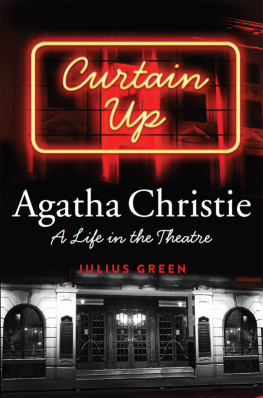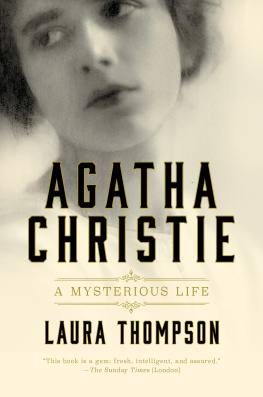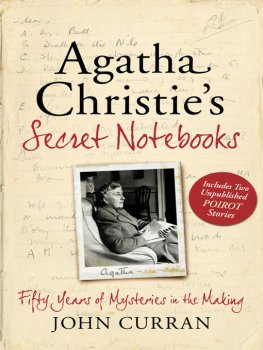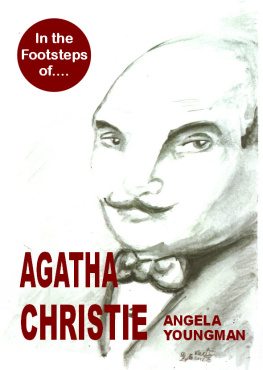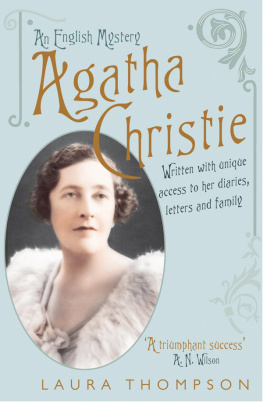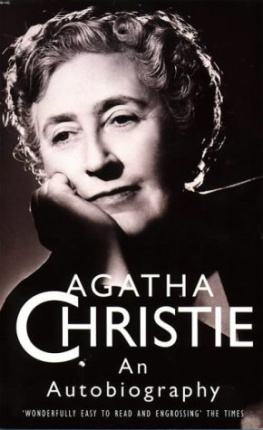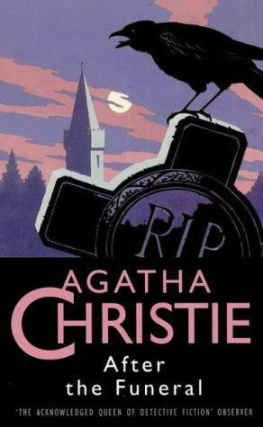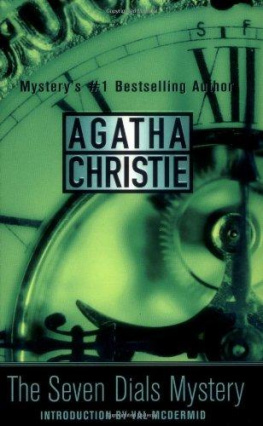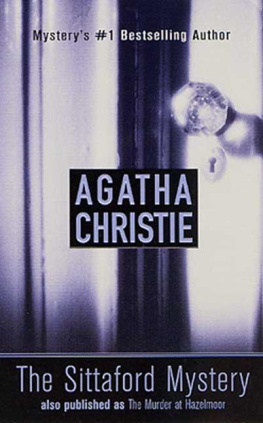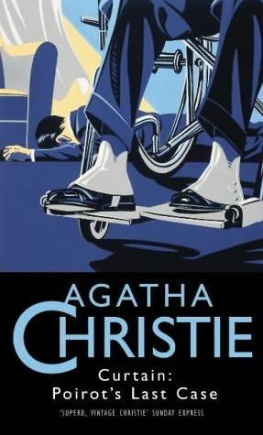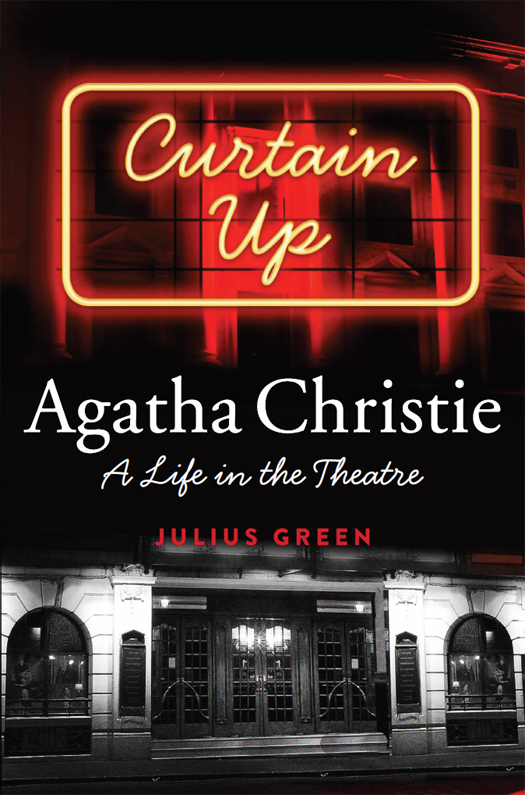A couple of years ago, my friend Julius Green came to see me looking unusually nervous! He said he wanted to write an important history of my grandmother Agatha Christies plays and asked if I would give my approval. I did so immediately, because I knew of Julius huge knowledge about her plays, and the admiration and passion he had for them. I remembered when we shuttled back and forth on a train to Westcliff-on-Sea in 2001, when Julius organised a festival of all her plays, which was not only a huge success but became a piece of history in itself. Recalling that time, and Juliuss long involvement with the Agatha Christie Theatre Company, I knew I could rely on him to be the right man for the job.
But then there was something more. Although my grandmother wrote plays before the 1950s, the great explosion of interest that occurred around the time of the opening of The Mousetrap and her other successes coincided with the period in my childhood when I spent the most time with her, and became aware what a star she was (even though she hated people saying that!). Therefore nobody could appreciate more than I do how much of a contribution her dramatic output made to her unrivalled reputation, and I am delighted to have in Juliuss book such a fitting tribute to the genius of Agatha Christie as a playwright to help balance her better known achievements as an author.
In addition, I was fascinated by Juliuss insight into the theatrical history of the period, to learn of the forthright personalities of the major players, and to read how my grandmother coped so calmly whilst all around her were living their theatrical lives.
This book owes its existence to Mathew Prichard, who has always encouraged me in my belief that there is a significant story to be told about his grandmothers work for the theatre, and who generously granted me access to all of her papers so that I could tell it. Mathew and Lucys boundless hospitality has made every visit to their family archive a delight, and both of them have spent much time and energy assisting me in my endeavours.
I am delighted that David Brawn at HarperCollins shared Mathews belief that this book should be written, and am hugely grateful for his support and guidance throughout the process, and particularly for his good humour when he was presented with a volume that was two and a half times the length of the one he had contracted. My editor, Steve Gove, has approached the task with a diligent attention to detail that I have greatly valued. William Collins first published Agatha Christie in 1926, and it is a privilege to be working with her publisher to produce a book in her 125th anniversary year.
Agatha Christie Ltd, the company that continues skilfully to mastermind the global distribution of Christies work in all media, has been another significant partner in this books realisation, and I am grateful to managing director Hilary Strong and her team for facilitating my work and for enabling my literary endeavours happily to coexist alongside my continued business dealings with the company as a theatre producer.
Numerous individuals have assisted me in the preparation of this book, but none more generously than Dr John Curran, the acknowledged leading authority on Christies work. He has kindly and unselfishly made available to me unused material from his detailed research on Christies notebooks, and has been an invaluable guide when my own research has entered uncharted territories. Although we approach our work from very different angles, John is a valued colleague; we enjoy both applauding and shooting down each others theories as each new discovery about this extraordinary writers work comes to light.
I have been particularly fortunate in being the first researcher to have been granted access to the extensive business papers of Agatha Christies friend and colleague Sir Peter Saunders, who produced most of her theatrical successes, and I am grateful to their owner, Sir Stephen Waley-Cohen, for his generosity in allowing me to access them in the midst of his busy theatrical production office, and to Jane Tichband and her colleagues for their patience and good humour in facilitating this. Sir Stephen also kindly agreed to be interviewed about The Mousetrap, as did the plays longest-serving resident director, David Turner, and they both gave me valuable insights into the productions history and the care and diligence with which it continues to be nurtured. Nick Salmon, Rupert Rhymes and Diana Rawstron very kindly approved my quotation of Saunders correspondence.
Of the many archivists who have helped me to access original material relating to Agatha Christies theatre work, Joe Keogh at the Christie Archive Trust and Gemma Poulton at Exeter University have been tireless in their assistance over the course of the books writing, and I am also particularly grateful to Sophie Stewart at the National Co-operative Archive, Ourania Karapasia at The John Rylands Library, University of Manchester, Jill Sullivan at the University of Bristol Theatre Collection and Samantha Gilchrist at Glasgow Universitys Scottish Theatre Archive.
James Hallgate at Lucius Books in York generously allowed me to sit in his shop and pore over a collection of the papers of theatre director Hubert Gregg, and Danny Moar and Nicky Palmer at the Theatre Royal Bath provided copies of material from their archive. Alex Brown at the Bath Chronicle and Anne Buchanan at Bath Central Library were also most helpful, as were Carl Smith at Torquay Museum, Jessica Bowles at the Royal Central School of Speech and Drama, Rhian Latham at Companies House and Cecile Chaffard at the Socit des Auteurs et Compositeurs Dramatiques. My thanks, too, to the staff of Cambridge University Library, the Victoria and Albert Museums Theatre and Performance Collections and the British Library Manuscripts Reading Room for their unfailing courtesy and efficiency.
In New York, I was welcomed to the Shubert Archive by Maryann Chach, Mark E. Swartz and Sylvia Wang. Marks prompt responses to my numerous subsequent enquiries constitute a substantial contribution to the research for this book, and I am greatly indebted to him and to all at the Shubert Organisation. I am also most grateful to Walter Zvonchenko at the Library of Congress, Washington, DC, for his expert guidance regarding Gilbert Millers papers, and to Morgen Stevens-Garmon at the Theatre Collection of the Museum of the City of New York and Sharon Rork at the Billy Rose Theatre Division of the New York Public Library for enabling me to access a wealth of material. Hilary Wall at the archive of the Marthas Vineyard Gazette responded to my email on the same day, attaching a copy of a historic document that was critical in developing a particular line of enquiry; Rick Loomis of antiquarian bookseller Sumner and Stillman in Yarmouth, Maine, promptly and helpfully assisted me with another; and Abbie Van Nostrand at Samuel French, Inc., New York, gave me some helpful pointers for reading material. Harold Ober Associates in New York very kindly approved my quotations from their agencys founders correspondence, and I am particularly grateful to Craig Tenney for facilitating this.

